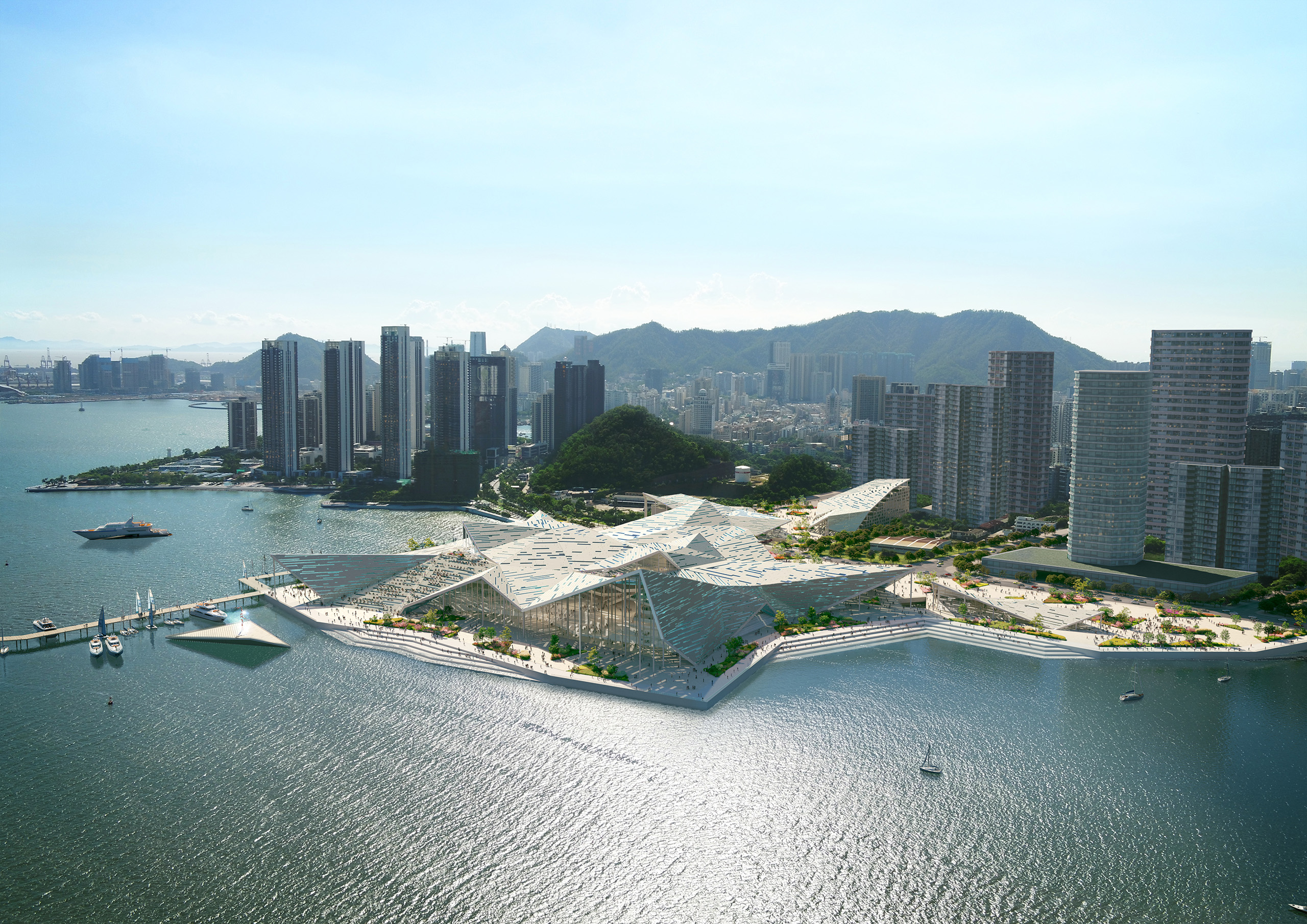
The Soundwave
Located in a critical position on Shenzhen’s southern shore and highly visible from the Shenzhen Bay Bridge connecting the city to Hong Kong, the Shenzhen Opera House will be the main jewel in a necklace of cultural projects that are emerging in Shenzhen Bay. MVRDV’s proposal for the Opera House, named The Soundwave, takes advantage of this prominent location, with a folded roofline in a dramatic form inspired by the building’s function.
- Location
- Shenzhen, China Mainland
- Status
- Competition
- Year
- 2020–2020
- Surface
- 222000 m²
- Client
- Municipality of Shenzhen
- Themes
- Architecture, Public, Culture
With 5,500 seats spread across four performance spaces, the Shenzhen Opera House is set to be one of the largest in the world. The Soundwave unites these four venues under a single iconic roof shape, which is folded to form entrances and “lifted” at key locations to highlight certain views and create skylights and rooftop bar spaces. Incorporated into the folds of the roof are sloping tribunes, providing outdoor seating spaces to enable open-air performances. The roof is finished in a light grey local stone to emphasise the building’s form, while also helping to integrate the building into its landscape.
The building is positioned directly adjacent to the location of a planned metro station on Wanghai Road, which strongly informs the building’s entrance sequence: from below the road, visitors emerge into a generous entrance plaza which is partly protected from sunlight and rain by the overhanging roof. From this entrance plaza, visitors continue into the large hall that envelopes all four venues, and can immediately appreciate the views towards the bay generated by a roof fold on the other side of the hall. Above, the ceiling of this entrance hall acts as a gigantic canvas for artistic light projections, giving the space a dynamic feeling and the building an ever-changing atmosphere.
Despite the complex form of the roof, the interior space and its arrangement is deceptively simple and therefore easy to navigate. The entrance hall is a simple rectangle in plan, enclosed by the roof and the glass walls underneath it. The back-of-house facilities are partially sunken on the level below the entrance hall, connecting all venues with a hidden network of functional spaces while maintaining a public entrance that is open and permeable on all sides.
The four venues comprise the main 2,300-seat opera theatre, a 1,800-seat concert hall, a smaller “operetta” space of 800 seats, and an adaptable multi-functional performance space with a capacity of around 600 seats. Each of the venues is given its own unique character through its colours and materials, inspired by the four main characters in traditional Chinese opera: the Sheng (male role), Dan (female role), Jing (painted face male) and Chou (the comedy role).
Outside of the main opera house, the project also includes 3 ancillary structures. Two buildings to the north of Wanghai Road contain apartments for the performers and offices for stage design and a production centre. Alongside the main building, on the north-east side of the site, is an art foyer building. Each of these additional structures is completed with a folding roof to give the same visual language as the main building.
In the spaces between, the project’s landscaping has been carefully considered to improve the public functions of the building and give people more reasons to visit and stay. The landscaping incorporates native plants, water features, and event spaces, while a promenade wraps around the entire building to give access to the waterfront, including a pier on one corner of the site. These landscape features contribute greatly to the building’s sustainable ambitions, which are further helped by large areas of photovoltaic panels that are included in the sloping roofs.
Gallery
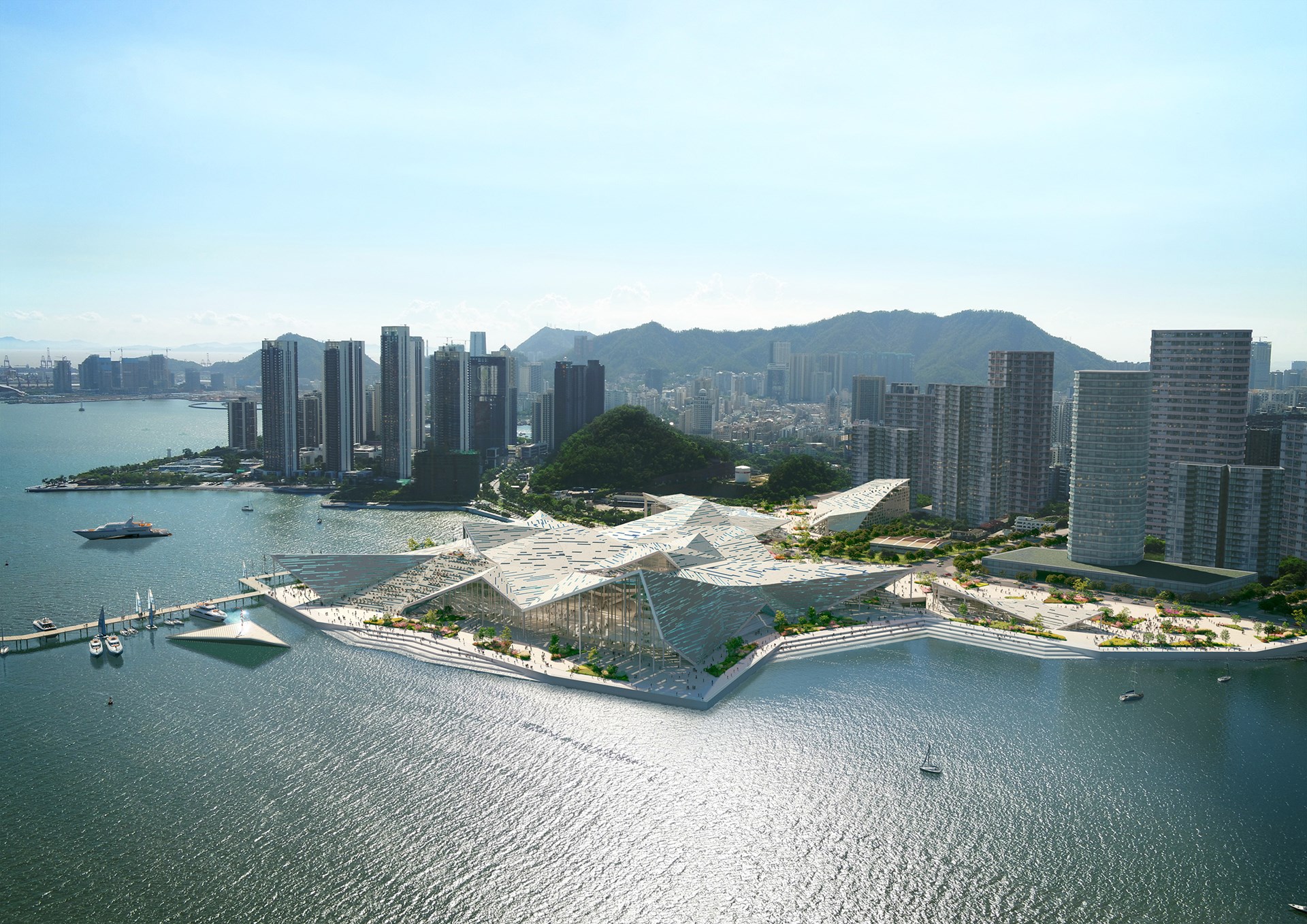
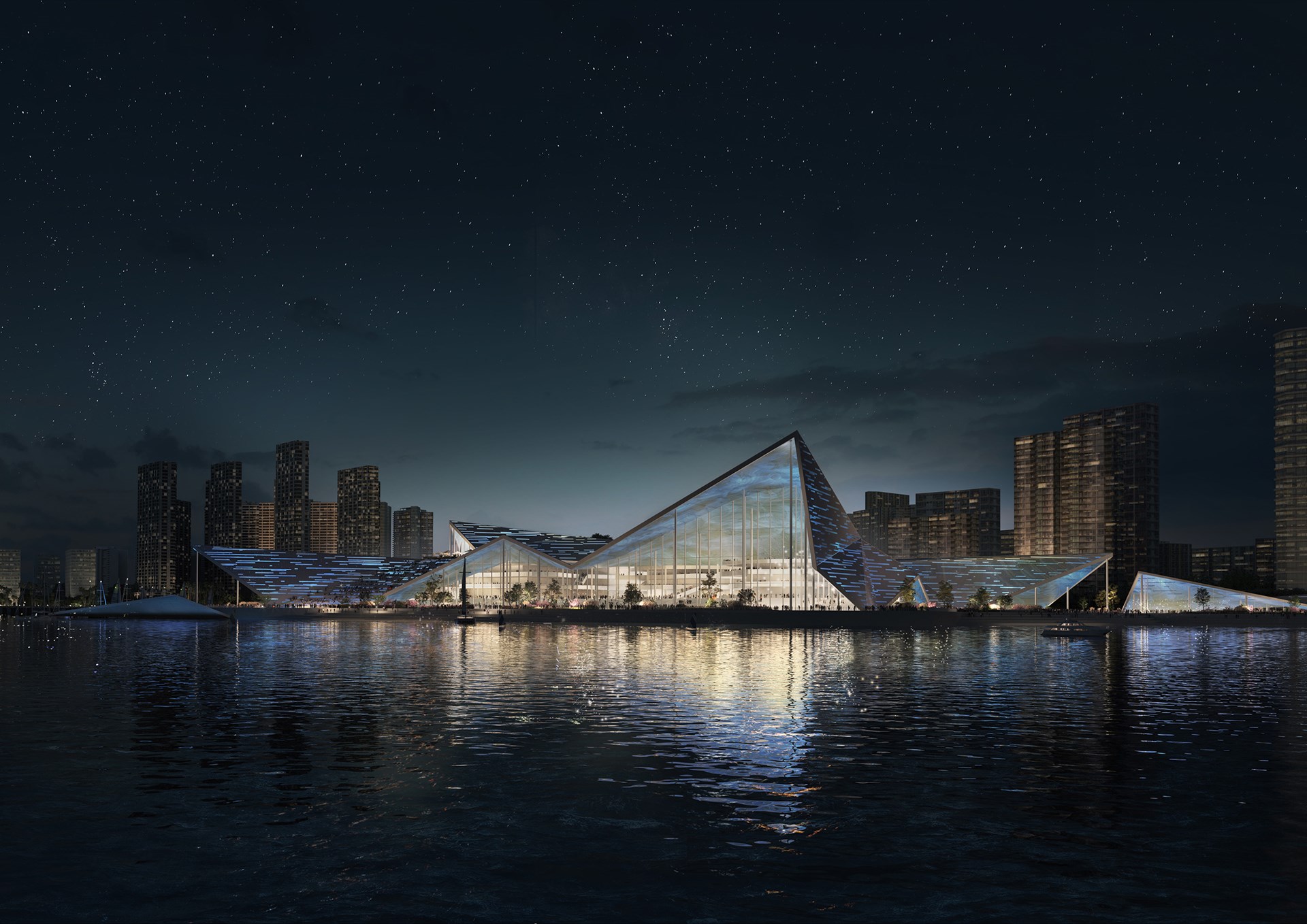


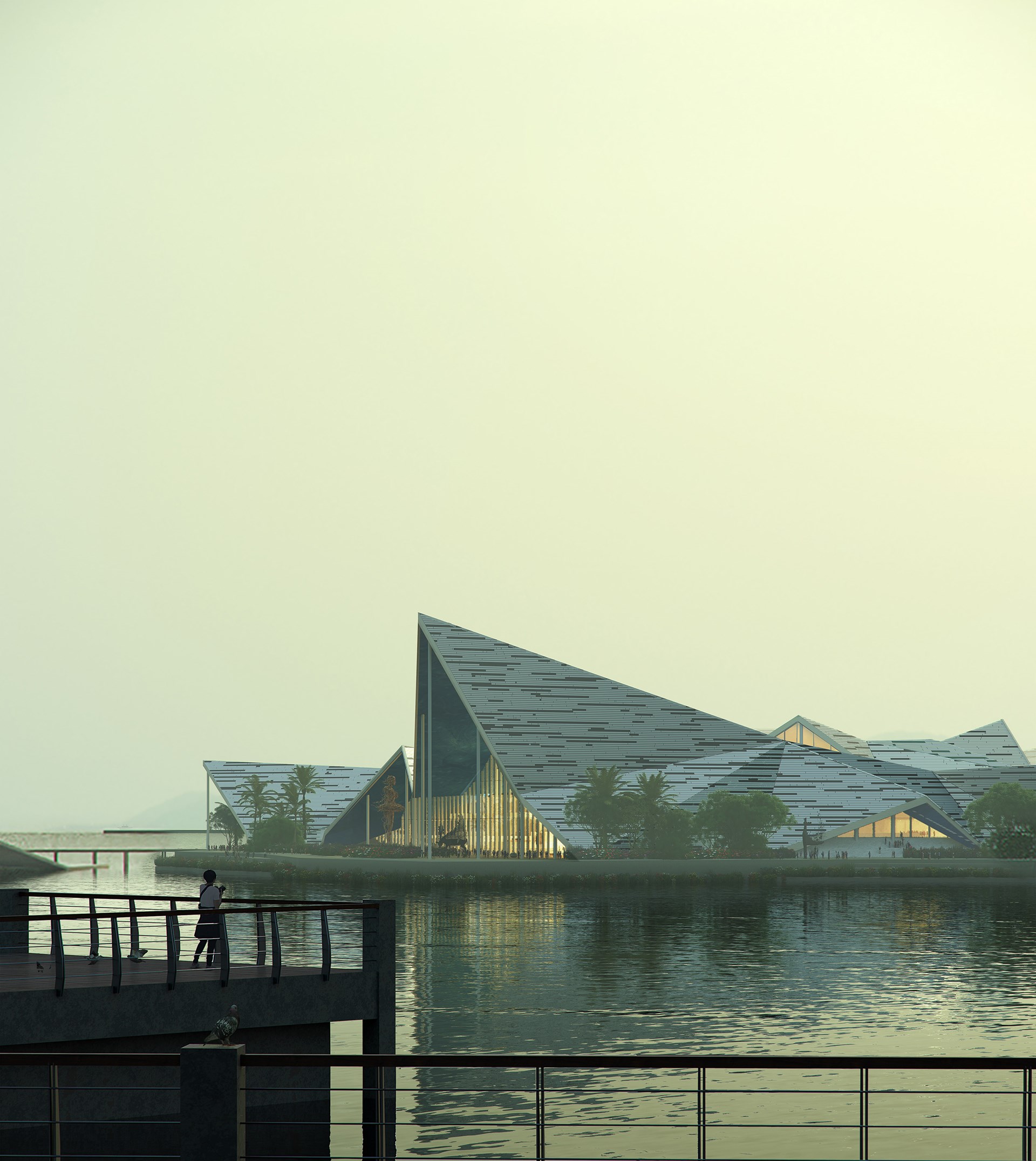
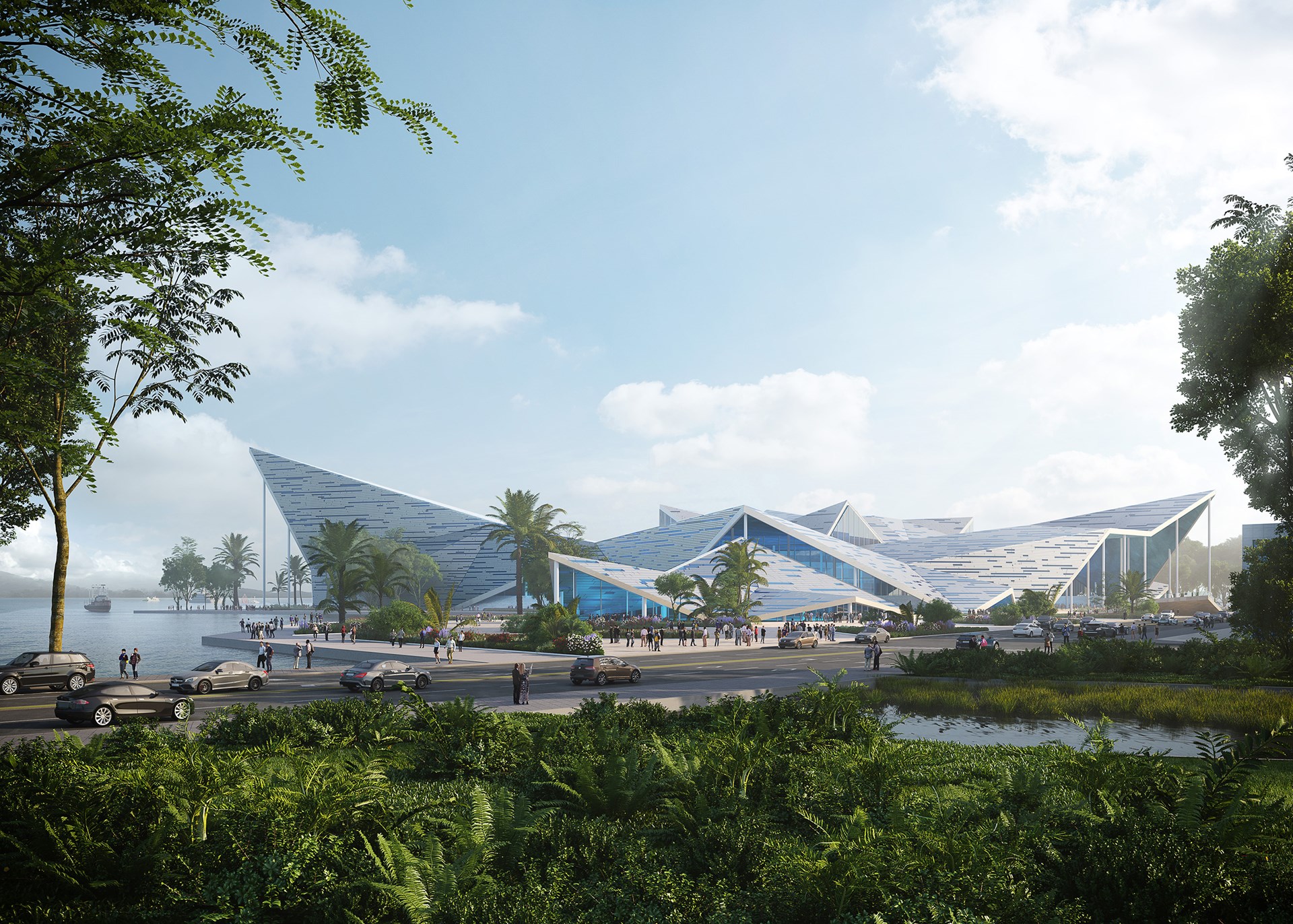

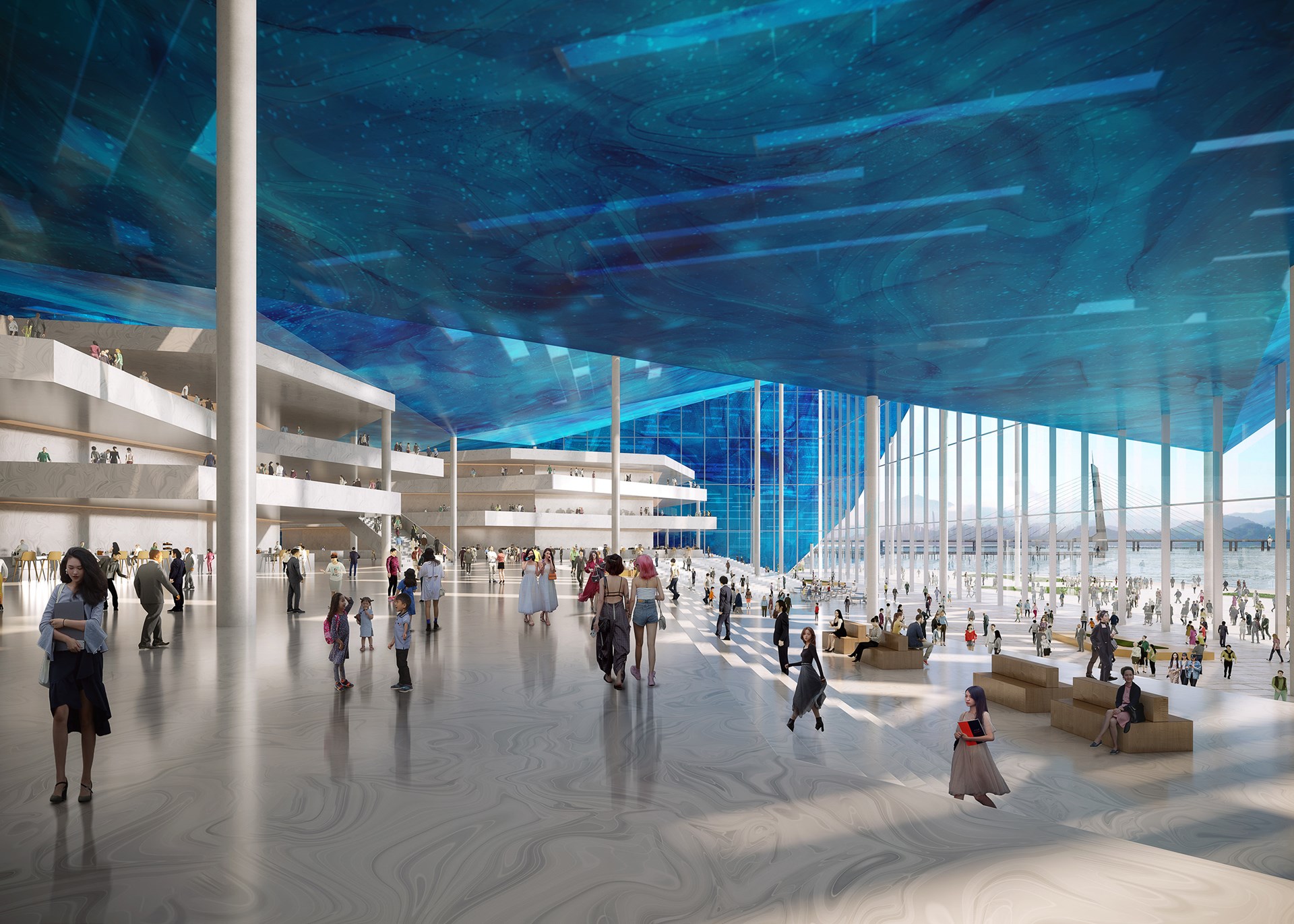


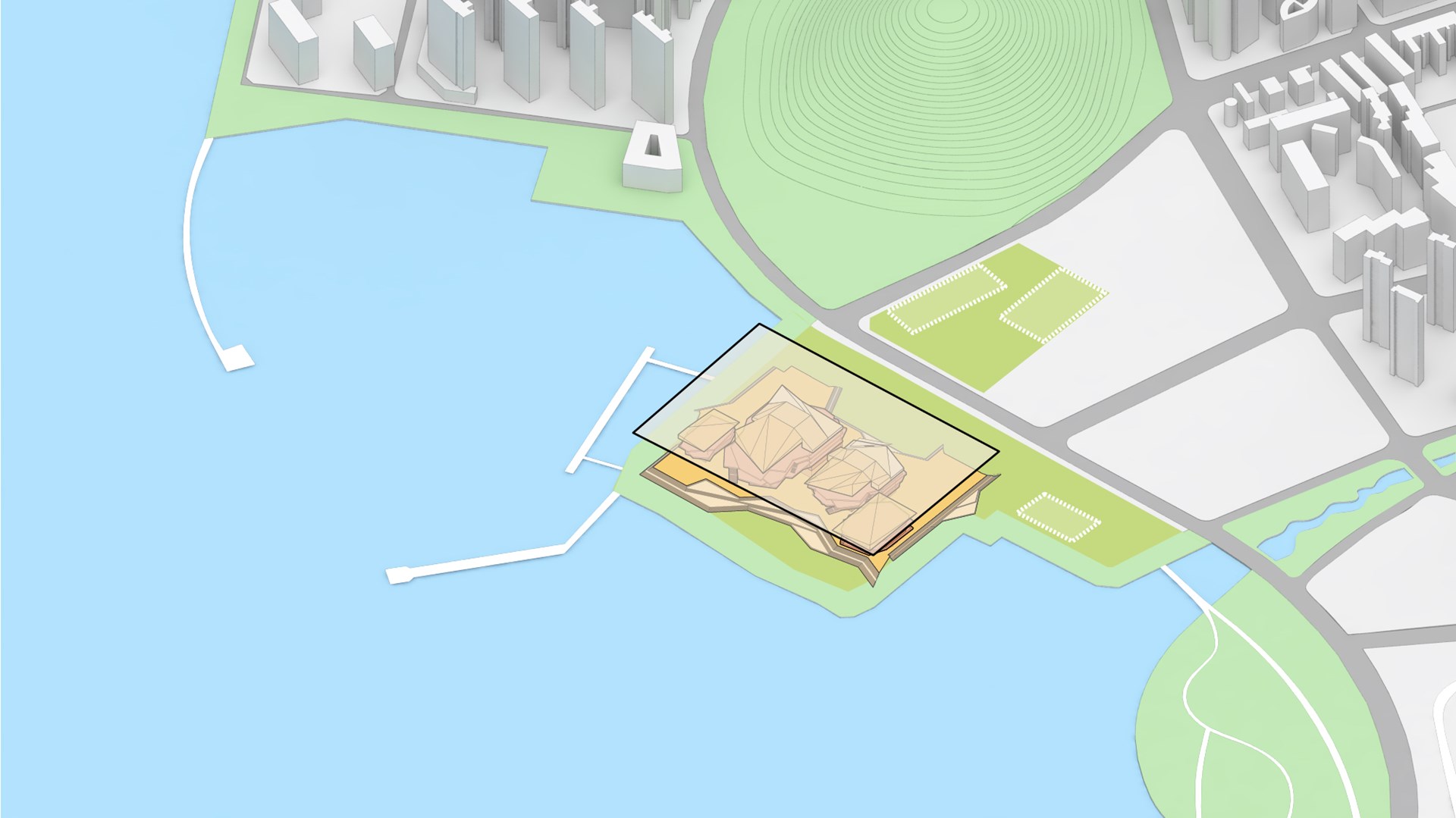




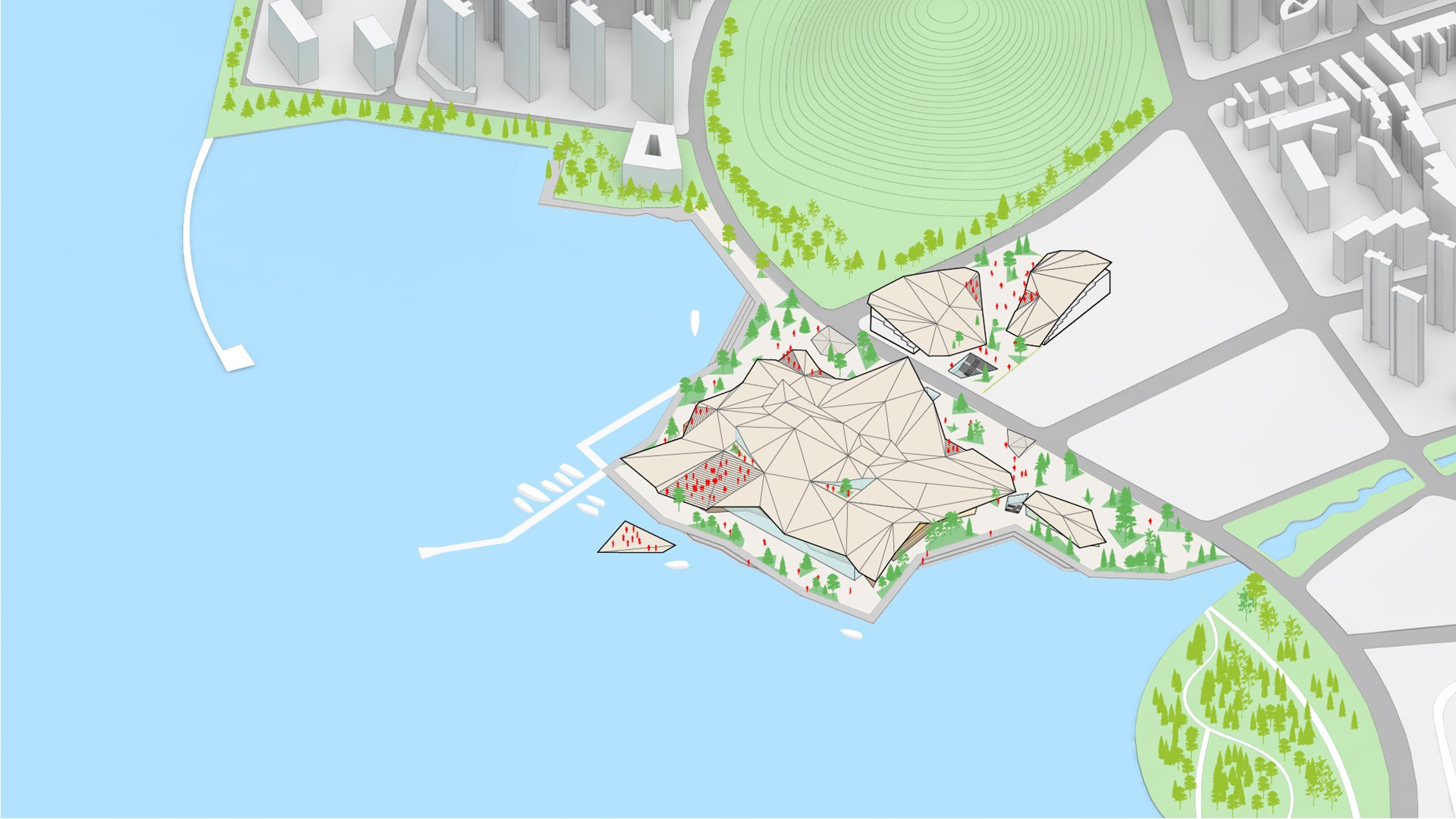

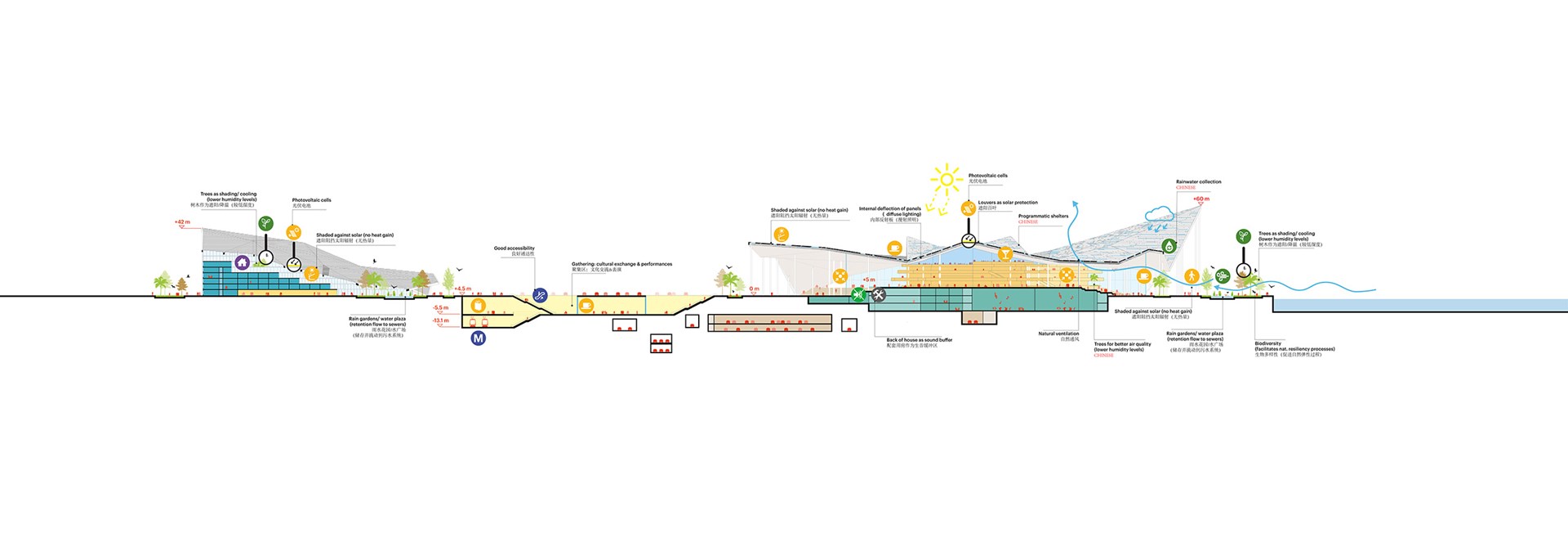
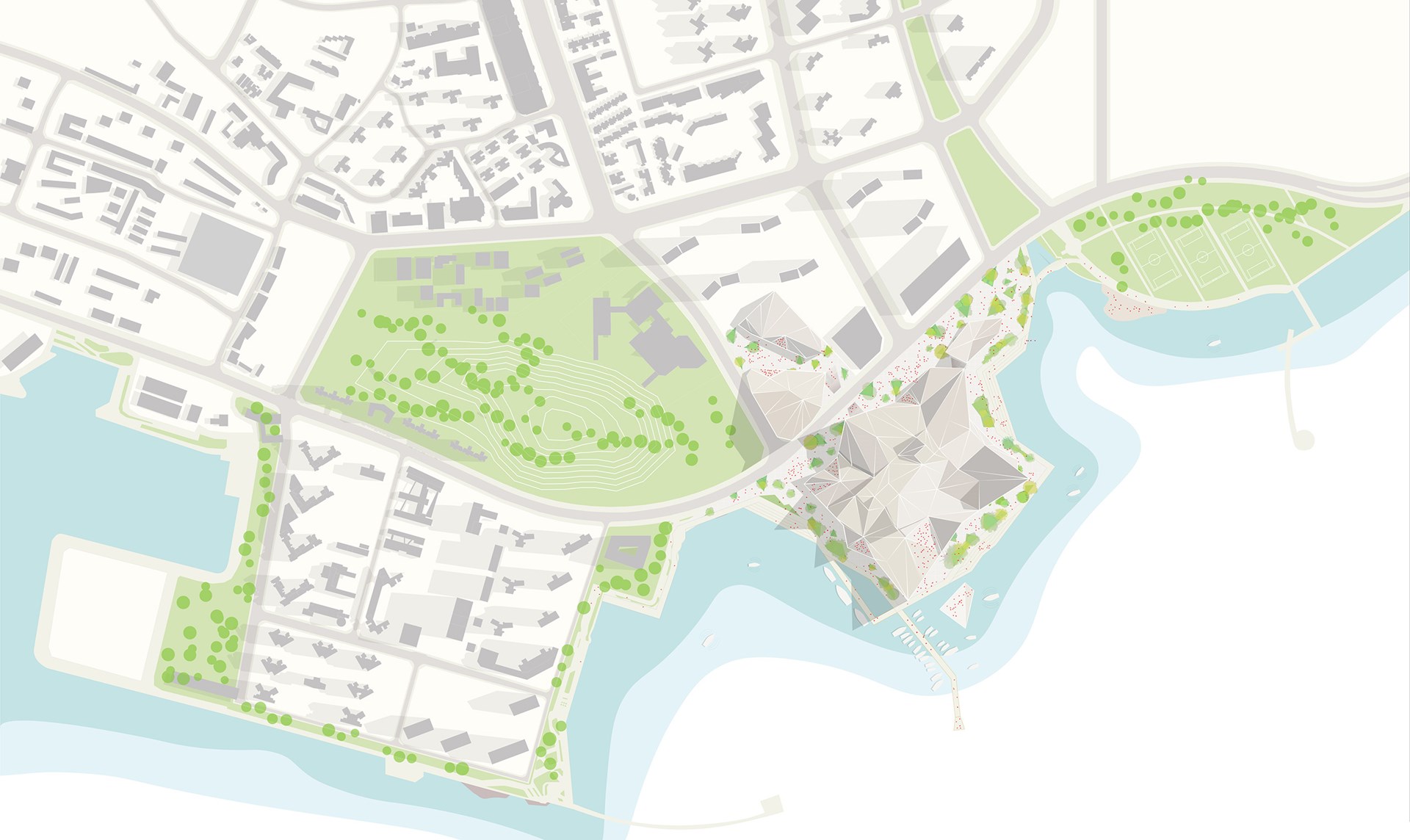
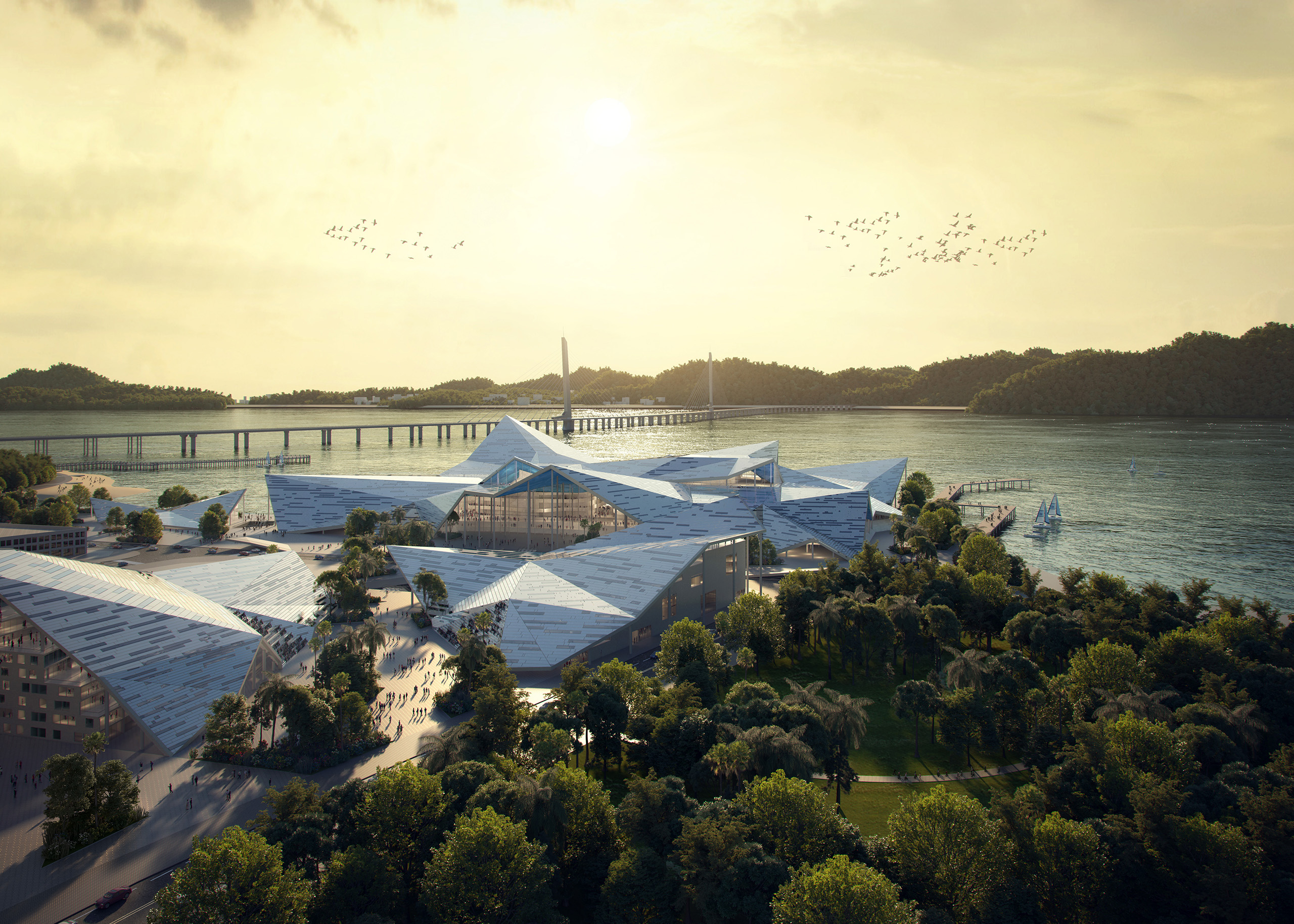
Credits
- Architect
- Founding Partner in Charge
- Partner
- Design Team
- Director MVRDV Asia
- Project coordination
- Strategy and Development
- Visualisations